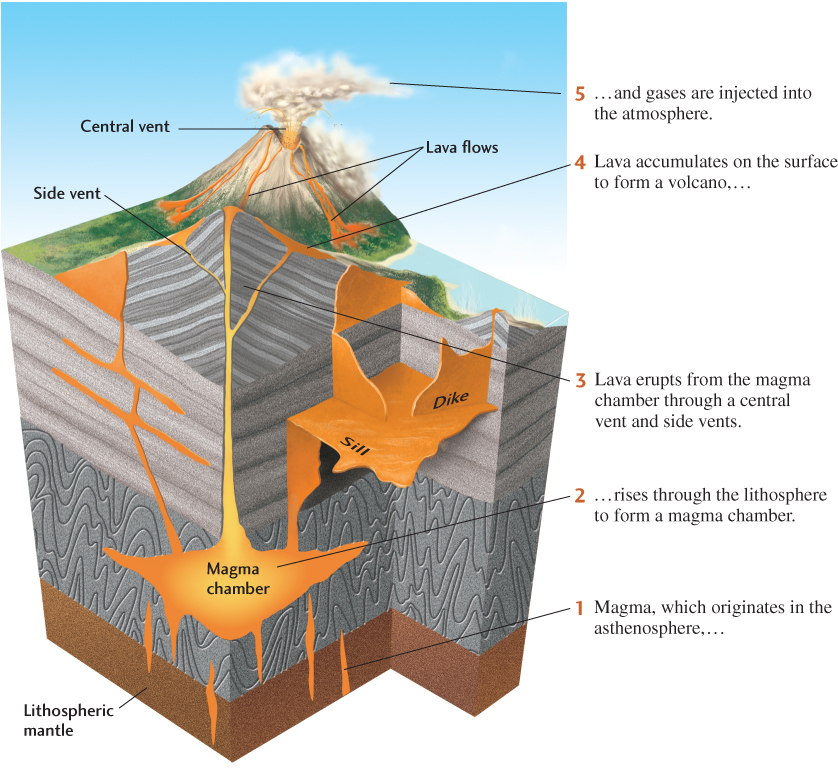Volcanoes as Geosystems
The geologic processes that give rise to volcanoes and volcanic rocks are known collectively as volcanism. We had a glimpse of some of these processes when we examined the formation of igneous rocks in Chapter 4, but we will take a more detailed look at them here.
Ancient philosophers were awed by volcanoes and their fearsome eruptions of molten rock. In their efforts to explain volcanoes, they spun myths about a hot, hellish underworld below Earth’s surface. Basically, they had the right idea. Modern researchers also see evidence of Earth’s internal heat in volcanoes. Temperature readings of rocks as far down as humans have drilled (about 10 km) show that Earth does indeed get hotter with depth. We now believe that temperatures at depths of 100 km and more—within the asthenosphere—reach at least 1300°C, high enough for the rocks there to begin to melt. For this reason, we identify the asthenosphere as a main source of magma, the molten rock that we call lava after it rises to the surface and erupts. Portions of the solid lithosphere that ride above the asthenosphere may also melt to form magma.
Because magma is liquid, it is less dense than the rocks that produce it. Therefore, as magma accumulates, it begins to float upward through the lithosphere. In some places, the magma may find a path to the surface by fracturing the lithosphere along zones of weakness. In other places, the rising magma melts its way toward the surface. Most of the magma freezes at depth, but some fraction, probably only 10–30%, eventually reaches the surface and erupts as lava. A volcano is a hill or mountain constructed from the accumulation of lava and other erupted materials.
Taken together, the rocks, magmas, and processes needed to describe the entire sequence of events from melting to eruption constitute a volcanic geosystem. This type of geosystem can be viewed as a chemical factory that processes the input material (magmas from the asthenosphere) and transports the end product (lava) to the surface through an internal plumbing system.
315
Figure 12.1 is a simplified diagram of a volcano, showing the plumbing system through which magma travels to the surface. Magmas rising buoyantly through the lithosphere pool together in a magma chamber, usually at shallow depths in the crust. This chamber periodically empties through a pipelike feeder channel to a central vent on the surface in repeated cycles of central eruptions. Lava can also erupt from vertical cracks and other vents on the flanks of a volcano.

As we saw in Chapter 4, only a small fraction of the asthenosphere melts in the first place. The resulting magma gains chemical components as it melts the surrounding rocks while rising through the lithosphere. It loses other components as crystals settle out during transport or in shallow magma chambers. And its gaseous constituents escape to the atmosphere or ocean as it erupts at the surface. By accounting for these changes, we can extract clues to the chemical composition and physical state of the upper mantle where the lavas originated. We can also learn about eruptions that occurred millions or even billions of years ago by using isotopic dating (see Chapter 8) to determine the ages of lavas.